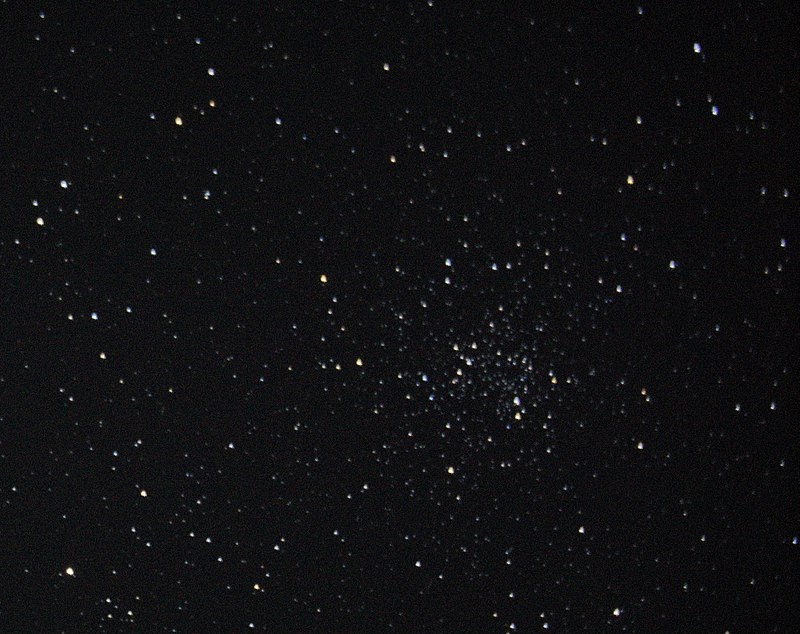Scientists have studied the scattered cluster NGC 2506. This rather trivial for the Milky Way object is of interest to scientists because the constituent luminaries formed at the same time. Therefore, it is very convenient to use its example to study how mass and proximity of neighbors affect stellar evolution.

Scattered cluster NGC 2506
Sometimes even rather ordinary space objects can tell us interesting things about the world around us. A team of astronomers from the University of Wisconsin–Madison and Harvard–Smithsonian Center for Astrophysics recently published a study of the scattered star cluster NGC 2506.
Scattered star clusters are groups of stars which originated from a single molecular cloud and continue to circle the Galaxy together, bound by gravitational forces. They don’t look very exciting, because the stars within them are chaotically arranged. Eventually, they all fall apart.
NGC 2506, also known as Caldwell 54, is one of about 1,000 scattered star clusters known in our Galaxy. It is located 12,700 light-years away, has a radius of 18.5 light-years, and formed about 2 billion years ago; this age is average for similar objects.
How the stars evolve
Despite the commonness of scattered star clusters, there is a whole program to study them. Within its framework, NGC 2506 was studied by the authors of the new article. They used the Wisconsin–Indiana–Yale–NOIRLab Observatory’s 3.5-meter telescope to do so. With its help, the scientists carefully examined 2,400 stars in this region of space and distinguished among them 320, whose natural velocities are very similar, which means that they are indeed members of the cluster.
Scientists are interested in the statistics of stars of different types in scattered clusters. The point is that since they all formed from the same cloud, their ages cannot be different. All differences must lie only in the mass of the luminaries, their surroundings, and perhaps the heterogeneity of the chemical composition of the “stellar cradle”, if there was one.
Exploring each of these possibilities provides a tiny piece of the puzzle, a picture of how stellar evolution works in general. In the case of NGC 2506, scientists were particularly interested in binary stars. There were 60 of them with rotation periods from 1 to 7,580 days.
They found that the cluster clearly lacks binary systems with orbital periods of less than 104 days. At the same time, there were an extremely large number of “blue lurkers” in the composition of such systems. These incredibly hot and massive stars are interesting because they evolve extremely fast.
Provided by phys.org


